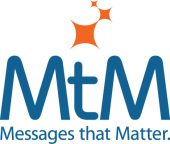Many companies fail to position effectively because they don’t use a set of criteria to evaluate their work. They come up with a positioning statement and run with it. Their chances of success aren’t great because they have no way of knowing whether the target audience will respond positively to their positioning statement.
A set of criteria takes a lot of the guess work out of finding the right positioning statement for your situation. Assuming you have done your 3Cs research on the customer, channel and competition, you’ve reached the point where your positioning team has come up with several viable positioning statement alternatives. Now you need to decide which one to move forward with.
At this stage, four criteria can help you assess the viability of the various statements. For each statement, ask if it is:
- Important
- Believable
- Unique
- Usable
This assessment will help you identify the message that will best stimulate market awareness and demand. Let’s consider these criteria in more detail.
Important
A positioning statement must respond to a prospect’s primary problem. By doing so, the statement will create confidence in your ability to offer a desirable solution, and it will create a sense of urgency in the prospect’s mind.
Understanding customer concerns is essential to position effectively. As part of your positioning process, you rank customer problems. Make sure your positioning statement addresses one of the top problems, and ideally, the No. 1 problem.
You can test the importance of a potential positioning statement by asking a simple question “So what?” If the answer produces a higher level benefit statement, then you haven’t yet found the most important benefit.
If you continue asking “so what?” you will ultimately arrive at one of three benefits for business-to business offerings – volume, share and profit.
However, we sometimes avoid claiming that a product will make a company more profitable because this type of statement may lack credibility. Depending on marketing conditions, the most believable and important benefit often will be found one step down from these ultimate assertions.
Believable
It’s hard to believe, but B2B technology buyers have learned to doubt nearly every claim they read or hear. Effective positioning allows us to cut through cynicism by making our case in simple, believable, compelling language.
Effective positioning statements recognize prospects inherent skepticism by avoiding exaggerated or meaningless claims. A believable positioning statement “rings true” by referencing existing market conditions.
Your status in your market also impacts the believability of your claim. Large companies like IBM or Microsoft can be more aggressive in the claims they make than small companies.
However, whether a big or small company, whatever claim you make, be prepared to prove it.
Unique
Positioning always occurs in a competitive environment. Therefore, a positioning statement must state a benefit that no other company is making. We use a technique called perceptual mapping that shows you how you are positioned relative to the competition.
When you make a unique claim, two things happen. First, you raise a significant barrier to competition. Second, you increase the desirability of your offering. These two outcomes can significantly impact sales volume, market share, and profitability.
Usable
A positioning statement provides a foundation for changing market behavior through marketing communications (advertising, web site, public relations, direct marketing, etc.). You can affect market behavior by consistently repeating your positioning statement – or the conceptual idea – in all your marketing communication over an extended period of time.
Your positioning statement should be short, declarative sentence – 12 words or less not including product name; uses simple language and states one benefit. Multiple-benefit positioning statements don’t work because which one is your position?
A positioning statement can be conceptual and does not need to used verbatim. For example, “accelerate decision making throughout your enterprise” can be executed in an advertisement as “see how fast your business can run.”
You can test your positioning statement for usability by writing a draft press release, creating a one-page brochure or product spec sheet, etc. Try it out on a test web page. I like to write several length product descriptions starting with 75 words, and adding 75 words for several iterations.
Conclusion
When your positioning statement is important, unique, believable and usable, you can be confident that your target market will listen to your marketing message. More importantly, a statement that satisfies these criteria has a good opportunity to occupy a space in your prospect’s mind.
